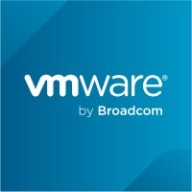

VMware Aria Automation and Red Hat CloudForms compete in automation capabilities. VMware Aria seems to have the upper hand due to its seamless AD group integration and advanced automation features.
Features: VMware Aria Automation offers seamless AD group integration which facilitates broad user access and the creation of custom service designs using vCO. It integrates with SaltStack for rapid service alerts and automation of scaling, providing multi-cloud support and remote execution advantages. Red Hat CloudForms provides extensibility through open-source tools, offering robust cross-platform support but often requires manual configuration for achieving full functionality.
Room for Improvement: VMware Aria Automation could enhance its logging capabilities and improve integration with public clouds and DevOps tools. Additionally, users have requested more comprehensive documentation and better testing procedures to resolve bugs in new versions. Red Hat CloudForms is noted for its complexity and challenging user-friendliness. Users suggest the product needs more intuitive plug-and-play features and easier integration processes.
Ease of Deployment and Customer Service: VMware Aria Automation is typically deployed in private clouds and receives mixed reviews regarding technical support. Some users benefit from swift assistance, while others experience delays in escalation and case handling. Red Hat CloudForms appreciates community-based support for its open-source components, but users report delays with official support channels. VMware Aria is favored for organizations seeking extensive customization.
Pricing and ROI: VMware Aria Automation’s pricing is perceived as high due to its multi-tiered licensing model, though it often yields ROI through reduced deployment times and operational efficiencies. Red Hat CloudForms is less expensive for open-source users but commands higher costs for enterprise solutions. It is less flexible in scaling without additional resources, but both solutions show substantial ROI through reducing manual intervention.
| Product | Market Share (%) |
|---|---|
| VMware Aria Automation | 9.4% |
| Red Hat CloudForms | 1.5% |
| Other | 89.1% |


| Company Size | Count |
|---|---|
| Small Business | 4 |
| Large Enterprise | 7 |
| Company Size | Count |
|---|---|
| Small Business | 32 |
| Midsize Enterprise | 24 |
| Large Enterprise | 130 |
Manage container, virtual, private, and public cloud infrastructures
Managing a complex, hybrid IT environment can require multiple management tools, redundant policy implementations, and extra staff to handle the operations. Red Hat® CloudForms simplifies IT, providing unified management and operations in a hybrid environment.
As your IT infrastructure progresses from traditional virtualization toward an Infrastructure-as-a-Service (IaaS) model, CloudForms evolves, protecting your investments and providing consistent user experience and functionality.
VMware Aria Automation is a cloud management tool that allows companies to simplify their cloud experience through a modern automation platform. The solution is designed to deliver self-service clouds, multi-cloud automation with governance, and DevOps-based security and infrastructure management. It helps organizations improve IT agility, efficiency, and productivity through its various features.
VMware Aria Automation has multiple use cases that include the following:
VMware Aria Automation Features
VMware Aria Automation has various features that allow users to easily perform operations. Some of the solution's capacities include:
VMware Aria Automation Benefits
VMware Aria Automation offers its users various benefits. Some of the biggest advantages that the solution brings to companies that utilize it include:
Reviews from Real Users
Awais J., CTO/CEO at a tech services company, likes VMware Aria Automation because it saves a lot of time, provides more visibility, and has extensive automation capabilities.
An IT consultant at a government rates VMware Aria Automation highly because the product gives you flexibility to analyze and consume resources.
We monitor all Cloud Management reviews to prevent fraudulent reviews and keep review quality high. We do not post reviews by company employees or direct competitors. We validate each review for authenticity via cross-reference with LinkedIn, and personal follow-up with the reviewer when necessary.